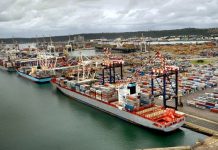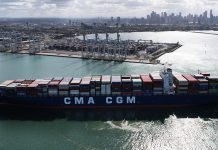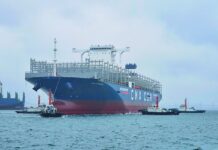
In another sign of declining cargo volumes to and from Japan, the 2M Alliance of MSC and Maersk has cut Tokyo from its Far East-US West Coast TP8 service.
Maersk Line’s customer advisory stated that removing Tokyo, which was the first Asian port of call for the service, aimed to “provide customers with efficient and reliable service”.
The 13,568 TEU Maersk Edmonton is now en route from Oakland and will be the first vessel to exclude Tokyo and start the TP8’s Asian rotation in Qingdao on 12 June. The service will continue to complete in eight weeks with eight Maersk-operated 10,100 – 13,500 TEU ships calling at Qingdao, Shanghai, Ningbo, Busan, Los Angeles, Oakland, and Qingdao.
Alphaliner’s 23 May report stated that future shipments between Tokyo and California will be handled via transshipment in Shanghai using Sealand Asia’s Shanghai – Japan Sakura Express as connecting feeder service.
Increasingly, Japanese shippers are having to depend on transshipment in China or South Korea to get their goods to the West.
Japan’s Ministry of Land, Infrastructure, Transport and Tourism states that in 2019, before Covid-19 hit, an estimated 22,000 container ships called at Japan’s main container ports of Tokyo, Yokohama, Nagoya, Osaka and Kobe. This figure declined to about 20,000 in 2020 and 18,000 in 2021. While 2022 figures are not out yet, the contraction is expected to have continued last year, with boxship calls in Japan expected to have dropped to a three-year low.
Manufacturing in Japan has waned since the mid-1980s, giving way to emerging markets in China and Southeast Asia.
Major box lines have determined that it is more practical to exclude Japanese ports due to the falling cargo volumes, while maintaining direct calls at China and South Korea.
However, that only means that Japanese shippers have to pay an additional US$200 to US$300 per TEU for transshipment, besides accepting that their cargo will take three to four extra days to reach their destination.
Martina Li
Asia Correspondent





